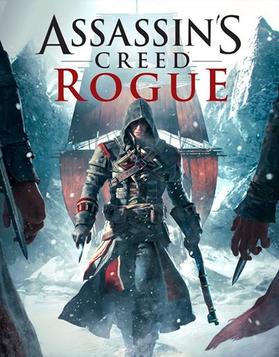The Dillinger Escape Plan has established a masterful, technical and chaotic beauty, reflected in their 2013 release, One of Us Is the Killer—a mystic beauty and an analysis into the design and correlating architecture of their own sound of mathcore and their inspirations through the hardcore scene throughout the ’80s and ’90s. The look into international history and pop culture creates a great anthology of narratives with technical and sporadic sound design. But to understand said themes and near-scholarship musical techniques—
“Prancer” – 3
The opening track establishes the overall “sound” of the band—the combination of chaos as reflected in their more hardcore aspects. Unfortunately, this song doesn’t have any standouts or good melodic builds. Especially in the following songs, there isn’t anything that shoots me with dopamine. I’m sure it’s a blast live and super heavy, but there isn’t anything that stands out instrumentally. It kind of feels like a deep cut off Calculating Infinity without the good rhythm work.
“When I Lost My Bet” – 4
I love the more percussive aspect of their instrumentation, with a bunch of fills from the drums that add a diversion to the ears through rhythmic dissonance from the guitar work and vocals. This really shows the bombastic side of their choruses and their ability to carry melodies within an almost metalcore-esque aspect. The guitar precedes itself with a heavy feedback filled in each riff, creating a tumultuous feeling.
“One of Us Is the Killer” – 5
For the title track, they sink into this swayful jazz with a dream-like stage. This song in particular shows what the concept of the instrumentation is supposed to be, with the edging line of psychedelia combined with really nice melodic choruses. You can tell the emotion and powerful voice of Pucciato’s grating cleans that bleed into the latter writing, with Weinman’s switchblade smoothness of dark jazz and his groove-oriented riffs. Weaved into this very dissonant work is a metaphorical-heavy commentary of destructive relationships with the main perspective of blame.
“Hero of the Soviet Union” – 5
If you want a great, kind of dumbed-down illustration of their early work—especially from Calculating Infinity—this is perfect. With that hardcore-heavy sound and speed, and a great series of choruses that hold such a strong and anthemic feeling, it’s a chef’s kiss. I mean, if you just imagine those bands like Cro-Mags or even a bare-bones Knocked Loose, and then apply that to musical scholars, you get this piece. Obviously, if you understand the weight of the Hero of the Soviet Union achievement, then it doesn’t come as a surprise that this is about individuals who position themselves as kind and use hollow acts of good to feed into that self-image.
“Nothing’s Funny” – 3
Honestly, this is probably the weakest on the album since it’s sandwiched between really great tracks. They usually differentiate themselves by using their own melodies, rhythms and even genre applications. Henceforth, this song feels very mid. They do nothing but kind of phone it in (at least to their stakes). At least “Prancer” was the first one and kind of established something, but this one did jack.
“Understanding Decay” – 3
Even though I’m putting this song low, it truly is very heavy. I love the return of that smooth, darkened jazz from the title track, while also contributing with their almost sense-over-encumbering instrumentation. The biggest standout is the lyrical concept, which tackles the idea of a decaying identity and roles within society and relationships. This obviously reflects the later problems they would run into, which would lead to their untimely breakup later in the decade.
“Paranoia Shields” – 4
I really feel this is probably one of the most unique-feeling songs with the switch of song structure. The verses are filled with a very prog-rock sound, almost reflective of Rush or Zeppelin (somewhat). The choruses are swapped with percussive-heavy and rhythmic instrumentation, taking out any preconceived notions. It covers a more illustrative defense about paranoia and an almost fantastical way of solving anxiety.
“CH 375 268 277 ARS” – 3
The only interlude within the album is pretty simple, and there really isn’t anything to look at—aside from the title, which is a cipher by Pucciato. He is the only one to understand it, and none have actually solved it.
“Magic That I Held You Prisoner” – 3
Even though I put it so low, it’s due to my understanding. After the many great pieces presented within this album, I felt this song didn’t have many hooks or parts that really grabbed me. However, with the combination of their basic style and the more emotional delivery from Pucciato, it lays a great foundation that I’m sure someone would appreciate.
“Crossburner” – 5
I would have been pretty satisfied if this were the last track, since from start to finish there are some great hooks. The best way I can explain this melody is a combination of Cro-Mags and Deftones. You can really feel that melody, and the build into this really odd ambience creates such a unique and powerful track. Between the presentation Pucciato creates with the ideas of commitments within relationships, and Weinman’s absolutely masterful guitar work, it really reflects the type of automation Dillinger was.
“The Threat Posed by Nuclear Weapons” – 4
As the record wraps up and we look into the final track, we find an odd but somewhat satisfying end to it all. For laziness, I will be naming this song “The Threat.” I’m super on the edge with this song due to more forthcoming prog sections. With the different styles and the approaches to the choruses being these two juxtaposed styles of hardcore, it creates this really nice diversity. But, they aren’t hook-heavy, so I feel like I’m not a huge fan—but somehow, I am.
Overall:
This album really reflects the impending doom of the band. The ideologies of a self-immolative or even toxic relationship—not per se with fellow band members but with creativity itself—create a fresh look into what creativity is and somewhat personify it. Even though this isn’t their last album, you can see they treated it like it would be, pulling out all the stops to create an immersive listening experience.

![[Review] The Dillinger Escape Plan- One Of Us Is The Killer](https://fohssignal.net/wp-content/uploads/2025/05/Dillinger_Escape_Plan_-_One_of_Us_is_the_Killer.jpg)

![[Review] Bloodywood - Nu Delhi](https://fohssignal.net/wp-content/uploads/2025/05/Nu_Delhi.jpg)
![[Review] Tool - 10,000 Days](https://fohssignal.net/wp-content/uploads/2025/05/10000Days.jpg)
![[Review] Baroness- Gold and Grey](https://fohssignal.net/wp-content/uploads/2025/05/a0534473864_16.jpg)


